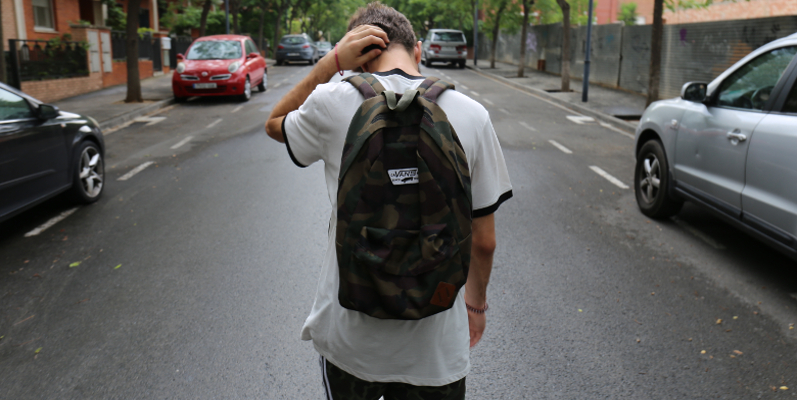Today’s That Thing You Do! segment is authored by Ali Capasso. Ali teaches 2nd grade on our Title I campus. I’m excited for Ali to share her wisdom about facilitating an environment where readers talk about the books they’re reading. You can follow Ali on Twitter @MrsCapasso
Every day, Timothy stops by my door. We have a tradition and we’re not breaking it for ANYTHING! Timothy and I are reading the same series: Harry Potter. We have plowed through the books, racing each other through to the end. At first I was always behind, but then I caught up when Timothy got some new books at the book fair. We talk about our favorite characters, our favorite parts, the mysteries of the series, the symbolism of the stories and our connections with the troubles at Hogwarts as a student and a teacher at a somewhat less magical school. The conversation is always meaningful and one of the best parts of my day.
Timothy is one of my former students, currently in 5th grade. I aspire to have the same joyful conversations about reading and writing with all my students. Each day in my classroom we talk about our experiences as readers with that thought in mind. Are we helping our students to become immersed in this practice?
Famous British educator James Britton once said “Reading and writing float on a sea of talk.” The more our students talk about their reading, the better off they will be. Research shows that oral language proficiency goes hand in hand with literacy (Nation and Snowling, 2004). Language helps students process what they just read and formulate a complete understanding. The more they talk, the more meaning they will extract from what they just read.
How, then, do we teach them to structure the conversation in a productive way? How will they know what to say about their reading when they do talk? Here are some things to consider when facilitating effective conversations about reading and writing.
Modeling
There is nothing more powerful than showing students what we expect. When we engage in shared reading, teachers must think aloud in order to model the ways that good readers react to a book. In our classroom we practice asking deeper questions of the text, discussing its meaning, and reacting to aspects of the narrative in an organized fashion. This scaffolds less structured conversation. At the very beginning of the year, I may start with students speaking one at a time. Then, I slowly add in reactions to the thoughts of others. Finally, I release students to turn and talk, making notice of what we all hear in the conversations of others.
Teach Routines, Structures, and Rules for Conversation
Until I became a teacher, I had never thought about how many hidden rules that we follow during a conversation. We must maintain eye contact, listen attentively while giving visual cues, avoid interrupting, and use information from our conversation partner in our response. This is not something we are born knowing how to do. Helping students to learn these secret rules through explicit instruction is often the first step toward a productive conversation.
Another aspect is what the students will say as they go through their conversation. There are many great resources for this. Question/response stems can be a help for students in order to understand what their conversations will look like. Coach them about how to be respectful of their partner’s ideas.
Never assume that they already know something about having an organized conversation! At the beginning of 2nd grade, we first learn to take turns talking and listening. In our book clubs, we use a pile of sticky notes to determine who will get to talk about their ideas first. The student’s note that winds up on top will start. Practice appropriate reactions to thoughts. Model the idea that everyone’s ideas are important and valued.
Teach That Reading is Something Worth Talking About and Doing Every Day
Be honest with yourself. When was the last time you couldn’t keep yourself from talking about a book? When was the last time you read a book and it moved you to tears? Whether you were born a book lover or became one later on, your students need to understand that passion by seeing your excitement about literature. At our school, our instructional coach started the tradition of posting current reads on our classroom door.
Compile a list of what you read for your students. Tell them about your out of school reading activities and put them on a shared calendar. If students don’t think that you read for pleasure, why would they want to commit time to doing the same? Let your kids catch you reading whenever possible. For me that is usually the last 10 or so minutes of independent reading time when I have concluded my guided reading groups. Sometimes I may be reading when they walk in the door from specials or recess. When they ask me about what I am reading, I can’t wait to tell them all about it!
Commit to reading at least one book in each series that your students read in order to be available to discuss it. Reading the same things our kids read can be hard, but we must make a promise to them just as they have made a promise to us.
Provide Time to TALK!
I have to admit, I am a teacher who loves a peaceful, hushed classroom. Because of this, I schedule time during the reading block for talking about books so that we understand the purpose and structure of the conversation. This can occur during book clubs, as a series of book talks, or even as a lunch bunch. You will be surprised how much students love this activity. My kids have started begging to take books to recess to discuss them more.
Building meaningful conversations about literature can take time, but the effect that it has on your classroom will be monumental. Students who talk about their reading with peers will be infinitely more willing to read. Creating a reading community in your classroom will bring benefits for years to come.
Works Cited:
Britton, J. (1970). Their Language and Our Teaching. English in Education, 4(2), 5-13.
Nation, K., & Snowling, M. J. (2004). Beyond phonological skills: broader language skills contribute to the development of reading. Journal of Research in Reading, 27(4), 342-356.











please add me to your collaboration site Valinda!
Judy,
How fun to see your comment here. You can go to my site and in the right hand margin is a feature where you can sign up and you’ll get an email notice each week with a link to the blog post. Have a relaxing summer!